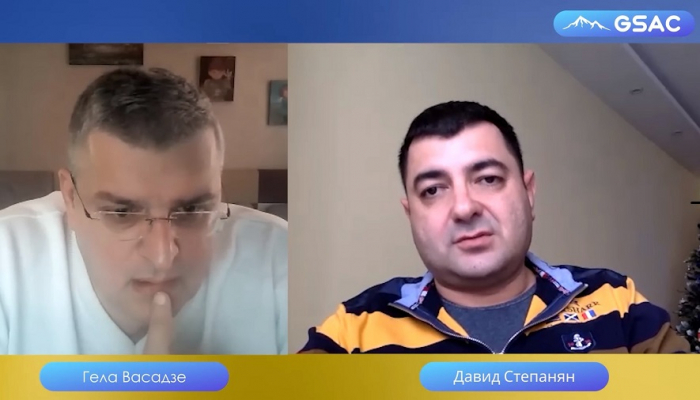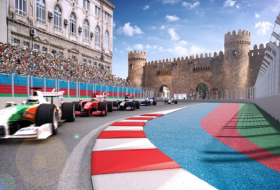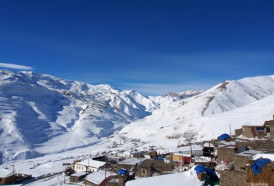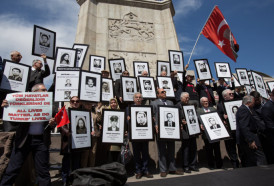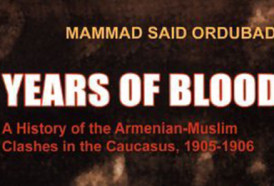Why are the Armenians so zealous in protesting environmental monitoring in two deposits in Karabakh? Why do they agree to the deprivation of ‘120 thousand people’ in Khankendi, as they claim, but refuse inspection of two beds?! Why do they tolerate the closed road, hold rallies all over the world, and raise the issue at the United Nations Security Council, all the while failing to accept the simplest and easiest solution?!
After all, what could be so scary for the Armenians about monitoring two fields that they have complicated the issue so?! This remains one of the most urgent questions of the day.
At first glance, the situation does remind of the theatre bizarre. However, taking heed of the statements by the Armenians sheds light on their reasoning for complicating the simple molehill of eco-monitoring into a mountain, almost a ‘life-death’ issue if you please.
The reasons that turn the corridor into a dead end
We catch a glimpse into several reasons in the Armenian political analyst David Stepanyan’s interview to Ghela Vasadze, a Georgian journalist. The analyst openly admits to one side of the issue: ‘…Because as soon as they are given access to the deposit, they will discover grave violations there. They will find hundreds of them in Kashen deposit…’
This clearly means that there are indeed serious ecological problems in Demirli in Gizilbulag deposits, which the Armenians call ‘Kashen’. This is the first reason they do not want to grant access. However, it’s not only about ecology: Any kind of exploitation of those deposits is already a violation, as they are within territories of Azerbaijan, officially recognized by the UN.
Stepanyan went on: ‘…They will then demand permanent presence there. The Azerbaijani police will later appear, at which point they will claim that the deposit is theirs. They will demand changing the owner and finally undulating the Azerbaijani flag in Khankendi.’
Clearly, the ecological issue we have raised has been rounded up to the question of ‘who Karabakh belongs to’ by the Armenians. Whereas we had intended to move forward, letting aside this question, which already has an unequivocal answer.
The Armenian media openly writes that the deposits in Karabakh belong to the local Armenian separatist regime, not Azerbaijan, and that they are the ‘most legally exploited’ deposits all over the world. To rephrase it, they have elevated the environment issue to the level of denying Azerbaijan’s sovereignty over Karabakh. This, of course, changes matters.
However, the interpretations of the Armenians do not end there. David Stepanyan honestly admits that the Zangazur Corridor is the end target: ‘Azerbaijan had said a few months ago that Lachin and Zangazur corridors should have equal status. They want a corridor through Mehri. Through Mehri! This is an important issue, because it will serve separating Armenia from Iran.’
This needs clarifying: not ‘a few months’, but exactly a year ago. On 14 December 2021 President Ilham Aliyev had said at the press conference held jointly with Jens Stoltenberg, NATO Secretary-General that the legal regime of the Zangazur Corridor should be exactly the same as the Lachin Corridor: ‘The Trilateral Statement clearly says that Azerbaijan provides security and unimpeded access for connection between Karabakh and Armenia, and Armenia should provide the same unimpeded access and security for connections between Azerbaijan and the Nakhchivan Autonomous Republic. Today there are no customs on Lachin Corridor. Therefore, there should be no customs on Zangazur Corridor. If Armenia insists on using their custom facilities to control the cargos and people, then we will insist on the same on Lachin Corridor. This is logical, and the decision is to be made by Armenia. We are ready for both options. Either no customs on both, or both customs on the two.’
There is nothing new or unusual in Azerbaijan’s request: Everything had been planned this way from the very start. It’s unclear why Stepanyan boasts to have discovered America while saying this. Moreover, both justice and logic demand this: If the losing side in a war is given an unsupervised corridor, why should the winner commute to and back through its own land under the loser’s control? History has never seen anything like that!
Armenia declares categorically that under no circumstances it will give a corridor to Azerbaijan. So, what follows next? They radically politicize the eco-issue, turn it into the argument over ownership of Karabakh and the issue of corridors and then declare that they do not intend to compromise even for a bit on either of them. The issue becomes deadlocked.
If everything continues so, there is only one thing left for the action participants to do: Don as many sweaters as they own and stand firm. The action for environment is becoming a race of endurance, pressured some more with psychological struggle. For the moment…
The Big Problem of the ‘Small Invasion’
Interestingly, the issue does not end here for the Armenian side: Stepanyan’s following statements elucidate why the delimitation and demarcation has hit the wall.
The fact remains that the seven villages in the Armenian enclave of Gazakh have been occupied since early 1990s. These are Baghanis Ayrim, Kheyrimli, Barkhudarli, Sofulu, Yukhari Eskipara, Gizil Hajili, and Ashaghi Eskipara. The Armenians first occupied Baghanis Ayrim in March 1990, because it is located on the Ijevan-Noyamberyan road and is of great strategic importance. The road now also connects Armenia to Georgia.
Stepanyan explicates that they by no means agree Azerbaijan seizing control over that road, which is why Yerevan insists on using 1929 maps for delimitation. The details are yet to be known, but it seems those seven villages were not included in the administrative territory of the Azerbaijani SSR on those maps. They are, no doubt, depicted as Azerbaijani lands on the 1991 maps.
A question then arises: But the Armenian leaderships claims to recognize the territorial integrity of Azerbaijan within the 1991 borders! This means their narrative changes as they go.
Regardless of when and how they are shown on Soviet maps, those villages are historical lands of Azerbaijan. They were occupied with merciless ethnic cleansing and gut-wrenching human tragedies. How can Azerbaijan give up its historical and legal lands?!
The details behind the peace process disruptions became clear thus:
· The Armenians demand the Lachin road remain as a corridor but absolutely refuse to grant Azerbaijan a corridor
· They do not want to recognize Azerbaijan’s right to control the territories temporarily supervised by Russian peacekeepers
· They refuse to return the seven occupied villages of Gazakh.
This position will facilitate neither defining borders nor signing a peace treaty. Unfortunately, the Armenians have yet to learn one important lesson: If you do not wish to shake the hand extended to you, it might return as a fist.
Vusal Mammadov is an editor-in-chief at AzVision.az news outlet.
More about:








